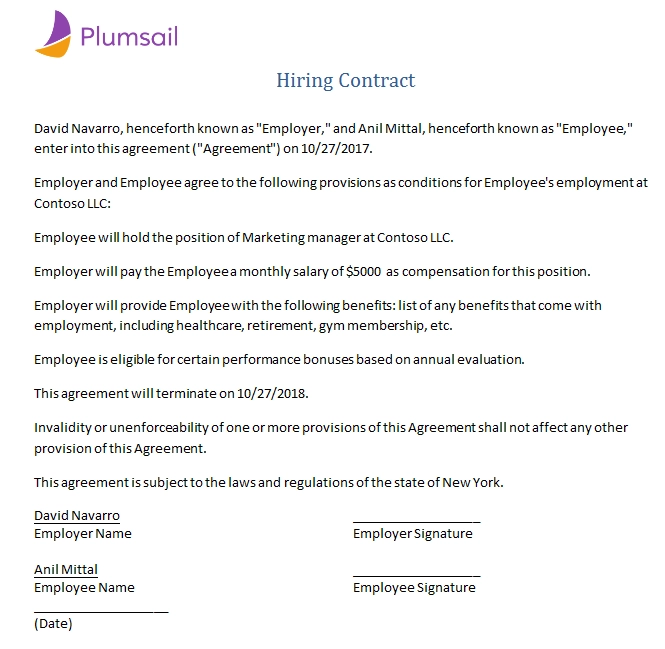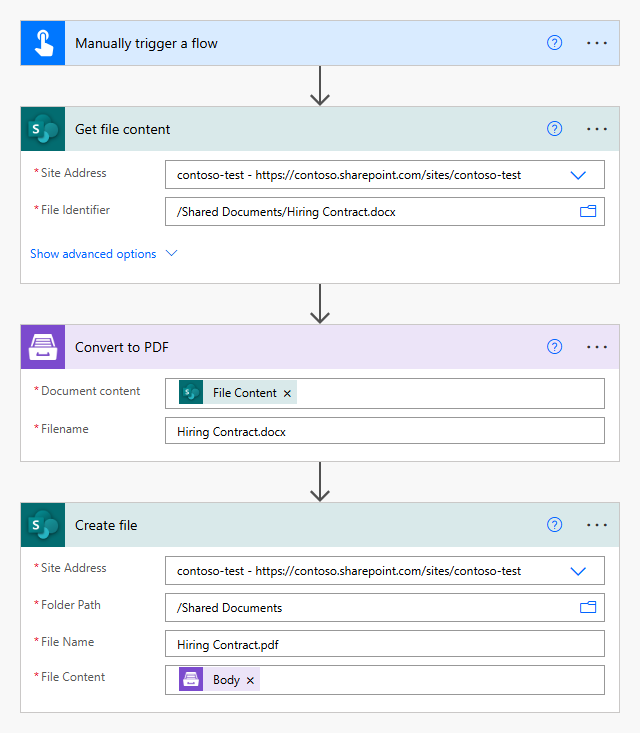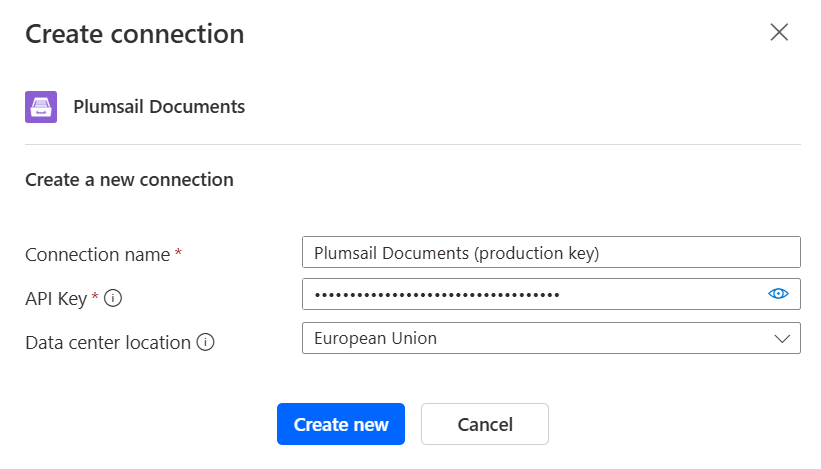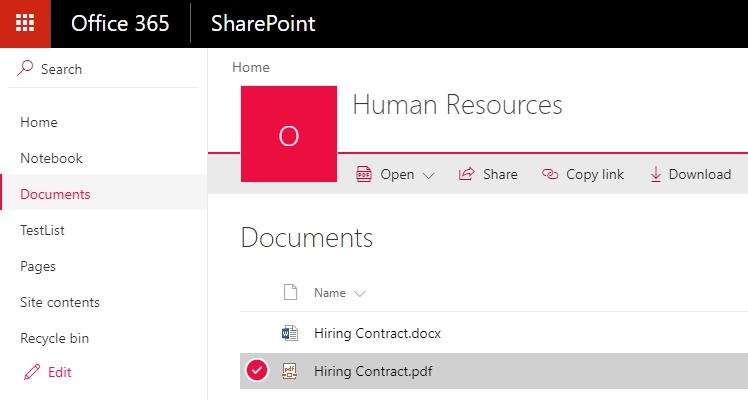Convert DOCX to PDF in Power Automate
This article demonstrates how to convert DOCX Word document to PDF and receive a pixel-perfect output as a result of this conversion in Power Automate (Microsoft Flow).
You can use the pre-built Flow templates or follow the steps outlined in the article to create your Flow from scratch.
Preparation
We will take a hiring contract as a sample Word document:

Use this link to download it.
Our document has to be stored somewhere. Power Automate (Microsoft Flow) has a lot of connectors for different systems. Here are just a few of them:
SharePoint
Salesforce
Box
OneDrive
Google Drive
Dropbox
SFTP
File System
You can store your source file anywhere. In this example, we will store our document in SharePoint. Our Flow will get a file from a SharePoint document library, convert it to PDF and store generated file back to SharePoint document library.
Setting up the Flow
This is how complete flow looks:

Here is step by step description for the flow.
Flow trigger
You can actually pick any trigger. For example, you can start Flow on file creation in a SharePoint document library. We use Manually trigger a flow trigger here to simplify the Flow.
Get file content
This action gets file content of the specified file from a SharePoint document library. You just specify SharePoint site URL and path to your file.
You can use any other connector to get files from your system.
Convert to PDF
This flexible action from the Plumsail Documents connector automatically detects and converts various file types – Word, Excel, PowerPoint, HTML, images, and more – into PDF. You don’t need to worry about checking the file formats and applying separate actions for each one – everything is handled seamlessly. Learn more about the Convert to PDF action and supported formats here.
If this is your first time using the Plumsail Documents connector, Power Automate will request you to create a new connection. Provide the following details and then click Create new:
Connection name - you can type any name for the connection, for example Plumsail Documents (production key);
API Key - create an API key in your Plumsail Account, copy it, and paste it into the API Key field;
Data center location - make sure the selected data center location matches one of your account.

Just put the DOCX file content from the output of the previous action and specify the filename. It will convert our Word document, and we’ll receive the pixel-perfect PDF output.
Create file
Now you need to store PDF file somewhere. In our example, we use Create file action from SharePoint connector to store the PDF document into SharePoint document library.

You can use any other connector to store PDF document into your system.
Ready-to-use Flow templates
We have simplified the process of Flow configuration for you. Below is a clickable widget of the templates that you can start from: